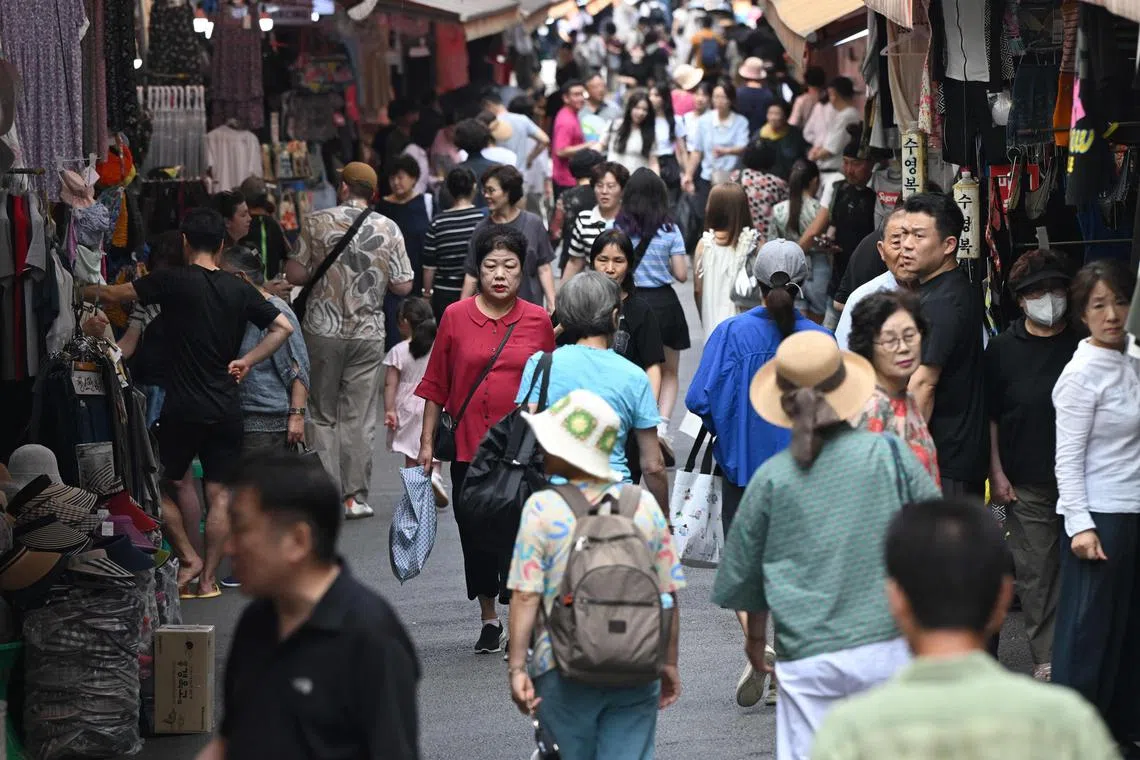South Korea’s population stagnates despite number of foreign residents topping 2 million
Sign up now: Get ST's newsletters delivered to your inbox

The South Korean national population has now decreased for four consecutive years since 2021.
PHOTO: AFP
Follow topic:
SEOUL - South Korea’s population showed almost no growth in 2024, as an increase in foreign residents was offset by a continued decline in the number of Korean nationals, according to government data released on July 29.
The data also highlighted the country’s aging population, with nearly one in five South Koreans now aged 65 or older.
In its annual census data, Statistics Korea reported that the total population reached 51.8 million as of Nov 1, 2024. This was an increase of just 31,000 from the previous year, or 0.1 per cent.
The population had previously declined for two straight years in 2021 and 2022, before rebounding in 2023. However, the growth in 2024 slowed from the previous year’s 0.2 per cent.
The slowdown came as the number of South Korean nationals fell by 77,000, or 0.2 per cent, while the foreign population increased by 108,000, or 5.6 per cent. The Korean national population has now decreased for four consecutive years since 2021.
Out of the total population, 49.76 million were Korean nationals, making up 96.1 per cent. Foreigners accounted for 2.04 million, or 3.9 per cent, marking the first time the number of foreign residents surpassed 2 million.
The foreign population had declined in 2020 and 2021 due to the Covid-19 pandemic but began rising again in 2022. The recent increase is partly the result of an expanded employment permit system and efforts to attract international students.
Among foreign residents, Korean-Chinese made up the largest group at 538,000, or 26.3 per cent.
Vietnamese residents saw the largest increase from the previous year, rising by 38,000, followed by Myanmar with 12,000 and Nepal with 10,000.
When looking into the data by age groups, the overall working-age population, defined as those aged 15 to 64, fell by 283,000 to 36.26 million.
The number of children aged 0 to 14 also dropped by 199,000 to 5.42 million.
In contrast, the population aged 65 and older rose by 513,000 to 10.12 million, passing the 10 million mark for the first time.
This resulted in proportion of seniors to increase, rising from 18.6 per cent to 19.5 per cent. THE KOREA HERALD/ASIA NEWS NETWORK

